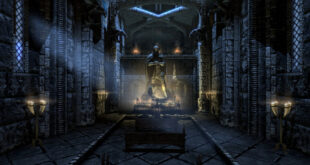Life is Feudal:Your Own is, in essence, a medieval life simulator. You spend your time doing menial tasks like logging trees, mining stones and precious metals, gathering herbs, farming, excavating, and terra-forming. So why is it one of the top selling games on Steam?
Why would anyone want to spend hours gathering materials just to build a plaster house? Or devote much of their time to mining ore, only to have it used by another player? To me, it’s for the sense of fulfillment. This is a game best played with others. You each pick a specific repetitive task to perform and work away. Then, after several hours, you can all sit back and look at the little hamlet that you’ve carved out for yourselves. This is where the sense of accomplishment, pride, and ownership comes in.
Currently this game is in early Alpha, but it shows a lot of potential. Lots of building options are available, though not all are fully implemented yet. At the beginning of the game, you spend your time walking around, looking for the items you need to get yourself started – such as branches, flint, and plant fiber. Branches can be gathered by right-clicking on trees and choosing ‘snap a branch’. Likewise, flint is found in rocky areas by right-clicking ‘search for useful flint stone’ and plant fibers from grassy areas by selecting ‘gather plant fiber.’ Different combinations of these three items allow you to make primitive tools. Once you have your tools, there are a handful of different skills that can be leveled, each offering different ‘endgame’ possibilities. There are three different skill pages; crafting, combat, and minor. Every skill tree starts out with something basic, then once level 30 has been reached, the next skill is unlocked. As an example, Prospecting leads to Mining, which in turn leads to Smelting, Forging, and Armoursmithing. Some of the minor skills include Swimming, Climbing, and Horseback Riding (although not currently implemented).
Graphically the game is attractive, although evidently poorly optimized for lower end to medium capability gaming machines. The trees in the game put the California Redwoods to shame. They grow very large in girth. If there is a small group of them close together, they become too big to tell apart, making them appear as one tree. Also, buildings like coops and barns passively make animal noises, even when empty, which can be misleading. One thing I do like is that the ground is not just grass, but has weeds and plants strewn throughout. When you’re looking at the mountains, you’ll also see the different types of building stones, such as marble and granite. The atmosphere is great and personally the background music reminds me of wandering around Howling Fjord in World of Warcraft; which is my favourite ambient music out of all of the games I’ve played, period.
One element of the game I haven’t delved into quite yet is combat. Roaming the woods, you’ll find both wolves and moose, which is where combat skills come into play. Upgrading certain combat skills leads to other armour and weapon capabilities. Warhorse Handling leads to Chainmail and Blades Mastery, which will eventually allow you to use Piercing Weapons. Instead, I have focused my skills on other areas. My favourite part of the game so far is Blacksmithing. You’re first required to level-up Smelting to be able to forge anything (which makes sense – you can’t really make anything without the proper materials and tools). You’ll either have a stockpile from what you’ve been mining to get the mining skill up, or you’ll have to make another trip to your mine. Smelting takes a lot of time; once you have ore in the forge it begins to heat up, but it takes about 15 minutes to get hot enough to be able to melt it. While it’s heating up, you have to keep it your forge maintained at the appropriate temperature. I normally use this time to get other materials together and find out what I’m going to make. Once the metal is heated, you can melt it into three different items; ingots, bars, or nuggets. All have different uses and some items may require a combination. As a smith, like most trades in the game, you are reliant on others. One example of this is that you need flux to make steel. Flux can only be made by herbalists. Alternately, herbalists require the steel that you’re making to upgrade their tools.
This is not a game of instant gratification. If you’re not interested in putting the time in to grind out the civilization you want to build, I do not recommend this game for you. However, if you have other friends who own the game or if you’re in a gaming clan that has active members playing the game, I’d suggest giving this game a try. There are many mechanics and elements to this game that will take time to learn, and doing it alone will most likely lead to frustration. Having a few friends working their way through it with you makes it more enjoyable. Although, if you still do get stuck, there is a wiki, lots of videos on YouTube, and guides in the community hub loaded with information. I hope this review assists you in making your decision about purchasing the game. I was one of those gamers sitting on the fence about this game, but in the end, I’m glad I made the investment.
 BrutalGamer Bringing you Brutally Honest feedback from today's entertainment industry.
BrutalGamer Bringing you Brutally Honest feedback from today's entertainment industry.





